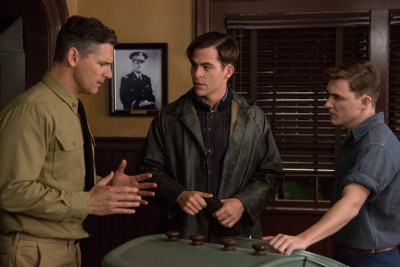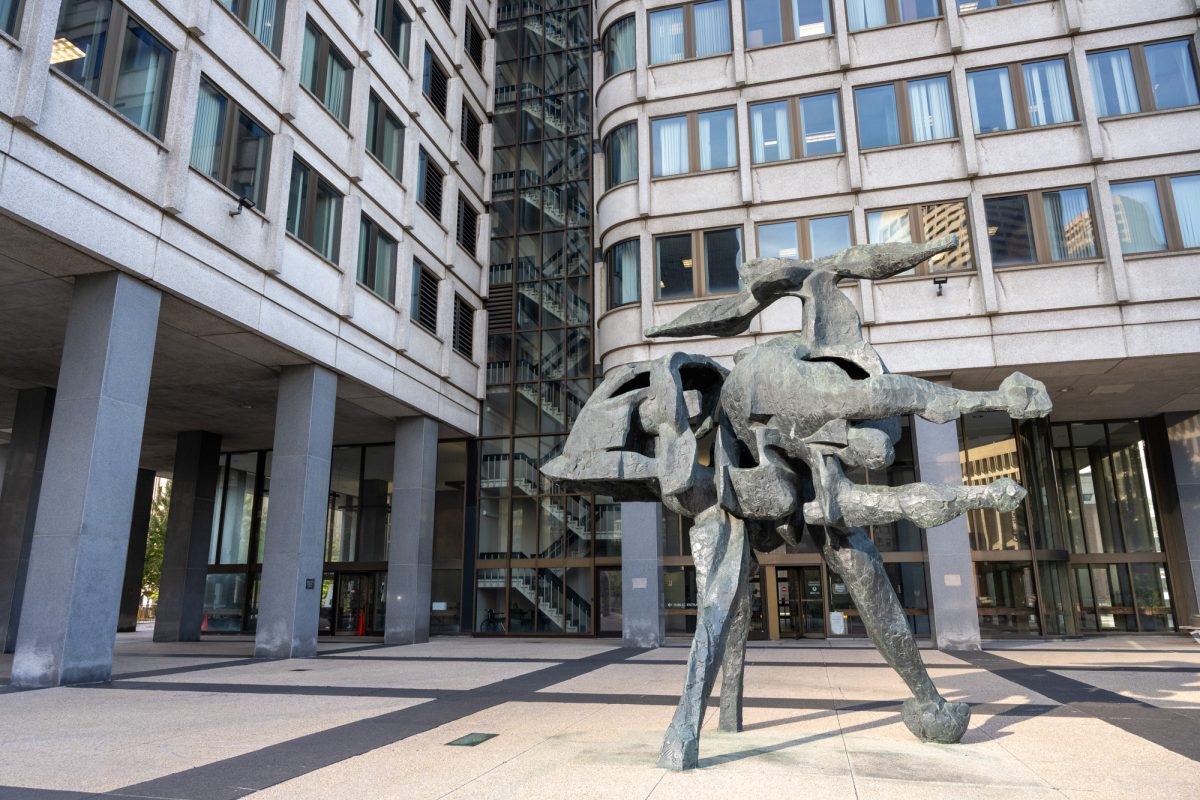
The problem with disaster movies nowadays is that they attempt to turn a major cataclysm of some sort into a character-driven story, which can, of course, either work toward the movie’s benefit (“Titanic”) or just make the movie much more annoying (“2012,” “San Andreas,” “The War of the Worlds”).
Disney’s “The Finest Hours” seems like it had that all covered. However, U.S. Coast Guardsman Bernie Webber (Chris Pine) actually existed, and the rescue mission to save the crew of the S.S. Pendleton actually did happen, so it would seem like the film would have its story already laid out.
The end result is a movie that only manages to breach the surface of excitement and adventure every once in a while, all while drowning in a sea of overall blandness and awful writing.
The movie’s first act is an attempt to establish Bernie Webber’s character, which already is a faux pas. By attempting to retain the memory of Webber, who died in 2009, his movie counterpart is presented as an All-American hero. He goes on dates, gets nervous around the gals and serves his country the best he can, just like every other stereotypical white male in the 1950s.
The only major difference in his life is that his girlfriend Miriam (Holliday Grainger) is the one who asks for his hand in marriage. How progressive!
This goes on for the first 20 minutes of the movie before it changes the focus to what is unequivocally its best and most interesting part — namely, the S.S. Pendleton, its crew and its splitting apart by a nor’easter.
The crew itself, regardless of how accurately it was portrayed, is much more rounded and interesting than Pine’s version of Webber. Within minutes of their introduction, each member presents some sort of unique quirk or aspect that makes them all seem like individuals who have been brought together for a journey rather than a sort of hive mind led by a captain and a first mate.
Casey Affleck’s Ray Sybert made for a much more interesting protagonist than Webber, undergoing an arc of growth from a shy, timid seaman into a brave, competent navigator whose ingenuity gives the crew a few more hours to live.
One almost wonders why the film wasn’t entirely done with the crew as the main focus for the first half of the film and the Coast Guard as the protagonists for the second act, saving a crew the audience would have already grown to like.
Instead, it takes around an hour for the film to get to the rescue, alternating between showing the rescue and the waiting crew of the Pendleton with duller scenes, like Webber’s fiancée’s attempts to find out where he is or the rising tensions at the Coast Guard.
A word about Miriam — her character is presented in the first half of the movie as a progressive type. Unfortunately for the majority of the film, she is simply dismissed by the Coast Guard because she asks a few questions and after Officer Daniel Cluff (Eric Bana) shouts at her, she proceeds to do absolutely nothing about it. Understandably, the ’50s may not have been the most progressive of times, yet something about Miriam’s character feels like watching a watered-down version of “Agent Carter.”
For all its faults in character, however, “The Finest Hours” does impress with its visuals. The Pendleton scenes and the rescue mission were all amazingly dynamic, illustrating how nearly impossible the odds were for either side — special mention goes to any shot of the Pendleton split in half or the rescue boat bobbing over and under the waves — but that’s about it for the movie’s positive qualities.
While the real story of the rescue of the S.S. Pendleton is one of the greatest displays of courage and perseverance in U.S. Coast Guard history, the Hollywood version turns it into a generic action-disaster, in which the first half sinks into oblivion while the second half barely holds up — much like the subject matter of the movie.









































































































